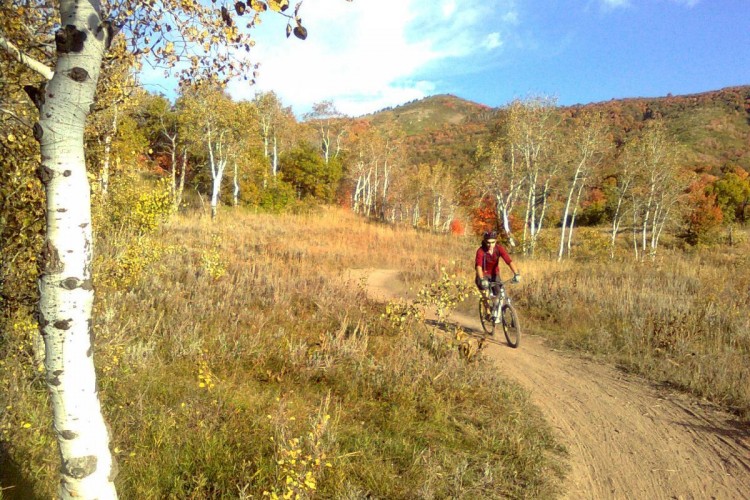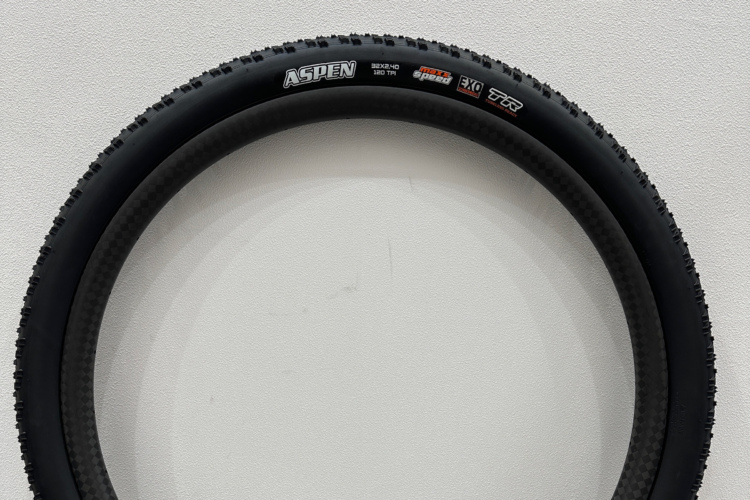
Sometimes it rains like the sky knows that the streets are dirty. As if they share a dialogue. Water pounds the pavement with a ferocity that feels saved up and playful as it pelts the ground to splash back shapes of bouquets and wine chalices.
Similarly, some bikes can smooth out rugged trails like they were made of soil samples more than studied kinematic graphs. Their creators have learned things about the way tires and suspension interact with the ground, and put that knowledge into the trail tools they create. The Mojo HD5 is one such bike, according to my partner, Megan Chinburg. “It’s a magic carpet.” Megan is currently working 50+ hrs a week managing engineers, so I will be writing up the build of the bike, and she will dig into the important part–how the Mojo HD5 rides.
The frame angles and build specs

The Mojo HD5 squishes around on 153mm of DW-Link rear axle travel, with 170mm at the fork, and both axles brace 27.5″ wheels. The frame came with a Fox Factory X2 shock upgrade that adds $299 to the frameset price over the stock DPX2 Performance damper. We live near the Italian and French Alps where 20+ minute descents are a dime a dozen, and the burlier shock has proven a wise choice over the past year. For folks who live near shorter descents, or simply want a lighter weight build, the DPX2 should suit this frame well.

This size small HD5 that Megan has been testing leans into an appropriately slack 64.2° headtube angle and a steep 76° seat tube angle to support its enduro racing intentions downhill and back up. The chainstays are a sprightly 430mm, trailing a 427mm reach. At 5’2″ (157.5cm) this is the longest mountain bike frame she has owned by a long shot. We put a 35m stem on that clamps 465mm-wide bars and slid the saddle forward to get the fit as close as possible to her other bikes. This is also one of the first bikes with a short enough seat tube that she could run a 150mm dropper. More on that below.

The custom-tuned 170mm Marzocchi Z1 Bomber fork, 11-speed XT drivetrain, 150mm SDG Tellis dropper, and Hope wheels with Pro4 hubs were all moved over from the Orange Alpine 6 she was riding previously. The only new parts on this bike are a set of XTR 4-piston brakes to replace the Saints and a Continental Der Baron tire in place of a Minion DHF. The bike’s external bottom bracket and internal tunnels for cable housing and brake hoses made the build a cinch. It would be sweet if the brake hose tunnel was a touch wider so that the rear brake could be removed without cutting the hose olive off, but it’s a small compromise for silent internal routing.

Mojo HD5 frames are well suited to whatever sort of filth and slop you want to throw them in, with 2.6″ tire clearance, a long downtube protector, ample chainstay coverage, and a cute little fender to keep the linkage from packing up with dirt and debris. Since Megan likes to slide in the mud occasionally, and I really like the “Brown Pow” paint on this bike, I covered the entire frame in a clear kit from Ride Wrap. While the plastic coating has a few dirtnap scars, the paint is looking as good as new.
The Ride
My first mountain bike love was cross-country. Having spent my formative years on hardtails and steep head tubes, my initial critique of any gravity-focused bike is on its climbing capabilities, and to say I am a picky one to please is an understatement. In this arena, the Mojo HD5 did not disappoint. The DW-link suspension platform indeed performs as advertised, transferring power from the pedals into the climb with imperceptible pedal bob.
The Mojo HD5 is an agile, maneuverable machine, like many of it’s 27.5 contemporaries, but what stands out for me is how the Traction Tune in the rear suspension playfully accommodates even the burliest trails. It took a few rides to adjust to the cognitive dissonance I would experience in a rough rock garden; my brain would say “this is gonna get rowdy!” but the bike would say, “nah, I got this.”

Even though the 2020 race season is now a wash, it doesn’t stop me from racing Gerow, or my own PRs down local trails. Part of the improved times I’m seeing are due to the snappy response I get from the Mojo HD5 when I stand up to sprint out of corners. I am still getting used to the increased traction through rocky or root-filled corners, and when I do find the confidence to let the bike go, it really does feel like I’m cornering on rails. Even if I second guess myself and scrub speed when things get too fast, the suspension pulls me through, upright and safe, and the linkage platform supports the smashing pedal strokes I need to take in order to catch back up to my rabbit.
One measure of a bike is how well it supports my ability to grow as a cyclist. Now that I’m more often excited about going downhill than up, I’m focused on riding faster, pushing harder into corners, tackling increasingly more intimidating lines, and letting daylight creep between the dirt and my wheels. I’ve never been a fan of jumping; I like the earth, I like feeling it beneath me. However, since first throwing a leg over the Mojo HD5, my opinion has changed. As I’ve gained more confidence, I’ve felt more willing to push my comfort level further than I have on any other bike. I’ve hit more drops, gaps and step ups with this whip than any one that came before it.

Conclusion
Whether I’m busting out a quick lunch lap, shuttling all day, or spending hours climbing in the saddle, this versatile and capable bike is a winning choice for going up or down the mountain. With the intentionally over-forked front end, the “extra-light high speed compression and rebound damping,” the Mojo HD5 feels like a true all-arounder ride capable of anything I’ve managed to point it at.













2 Comments
Jun 23, 2020
Jun 23, 2020